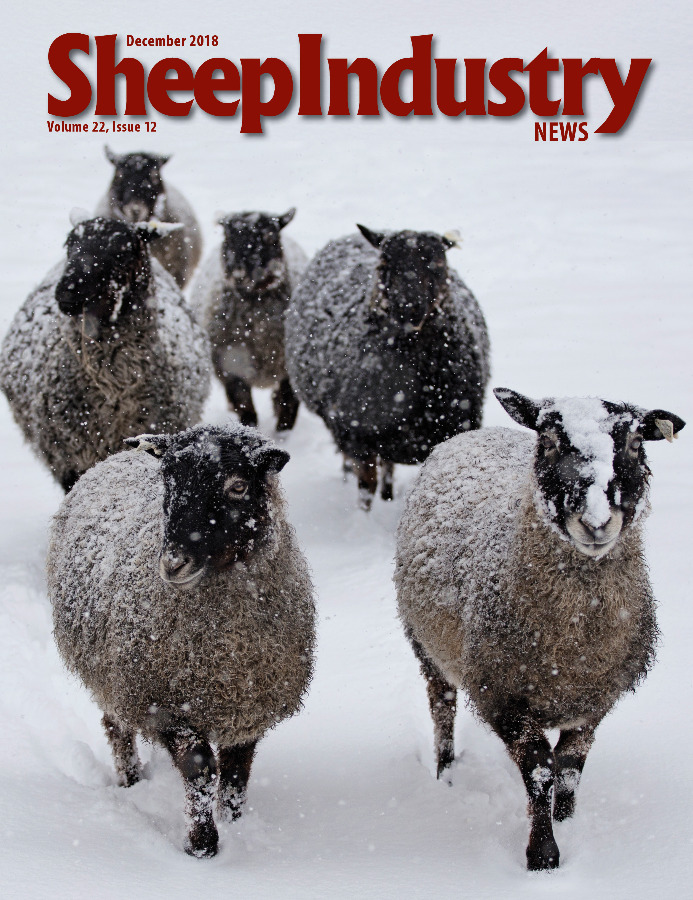
- December 2018
- President’s Notes
- Regulation of Fake Meat Creates Issues
- 2019 ASI Annual Convention
- American Wool Called to Duty in Army Uniforms
- Publication Sheds Light on Mycoplasma Ovipneumoniae
- Sheep Dairies Turn to Processing for Profits
- Culinary Experience Connects Chefs with American Lamb
- Obituary: Dr. Gerald Kennedy
- Market Report
- Jerry King Cartoon
- Around the States
- The Last Word
Regulation of Fake Meat Creates Issues for USDA, FDA
CHASE ADAMS
ASI Senior Policy and Information Director
Almost exactly 112 years before the publication of this article, Rep. James Wolcott Wadsworth Jr. (N.Y.) introduced the Federal Meat Inspection Act, popularly known to be inspired by Upton Sinclair’s book The Jungle.
In what would be considered swift action by Congress – even when that body operated under more regular order – the House passed the act in February 1907 and the Senate did the same four days later. By the beginning of March, President Theodore Roosevelt signed the act into law. The goal was to regulate meat processing across interstate lines and assure the public of the safety and wholesomeness of the meat products they consumed.
For more than a century, that hasn’t changed. The U.S. Department of Agriculture mark of inspection carries weight with consumers as pre- and post-mortem inspections are still carried out by USDA inspectors and sanitary standards are enforced. This ensures a safe, healthy and delicious eating experience.
Given that long history and the established role of meat from livestock in a healthy diet, it’s easy to be somewhat blindsided by the speed with which innovation is coming to the American meat industry. It was only a little more than a year ago that anyone really had a reason to consider a product in development trying to push its way into the market – that is, fake meat. Other products have come before, including veggie burgers, tofurkey, soy and almond milk and a panoply of others. They entered the marketplace in decades past. However, these products differed though from what science would be pushing in 2018.
Cell cultured, lab-grown – whatever you call this product – it falls broadly under fake meat. A meat alternative that may one day resemble beef, chicken or even lamb. What differentiates this generation of products from those that came before is their makeup. Without delving into the science, these products are produced by replicating the cells taken from an animal, without slaughter, and are at their most basic level the same as the traditionally raised product they are aiming to compete with.
That’s not to say they taste the same, look the same or behave in the same way. It is hard to imagine that anyone in a lab can replicate the biological processes that make lamb, beef, chicken or salmon well… lamb, beef, chicken or salmon. However, that is what these startups – and their investors, who include some of the largest agribusinesses in the United States – are trying to do. This is where Washington, D.C., the Silicon Valley and rural America converge. With companies pushing to make the manufacture of these products financially viable and drive investment, the questions of how these products will be regulated has suddenly come to the forefront of discussion.
Regulation of these products must tackle how they will be marketed, labeled, monitored for safety, specified for import and export, and a host of other questions that will realistically only be revealed in time. For policy makers, now it seems one of the biggest questions is who has primary jurisdiction of these products. With a massive food safety regime largely split between the Food Safety Inspection Service at USDA and the Food and Drug Administration, there has been wrangling behind the scenes on who will lead in what will inevitably be a major new venture in one of the largest sectors of the economy.
This development could show the utility of a food safety system that has a century-long track record of success or fall to an agency that has a history of label confusion (remember that it took more than 20 years before an FDA commissioner admitted that almonds don’t lactate).
To this end, the USDA and FDA held a joint two-day meeting in Washington, D.C., at the end of October, bringing together livestock groups (including ASI) to review these questions and solicit comments. Without a regulatory framework or clear jurisdiction, comments were aspirational. Livestock groups made it clear that these products cannot be labeled or marketed in a way that confuses the consumer or disparages traditionally raised meat and poultry.
At the same time, fake meat advocates urged freedom in labeling and touted the safety of lab-grown products, despite the fact that it will be many years before those claims can be accurately tested.
While there are a lot of questions that cannot be answered in the near term, ASI has remained engaged with other livestock and poultry groups to ensure it has a voice at the table. During the ASI Annual Convention in New Orleans, the Lamb Council will consider and discuss this issue at its policy forum. As a grassroots organization, ASI staff looks to its producer members to set the industry’s direction moving forward.

